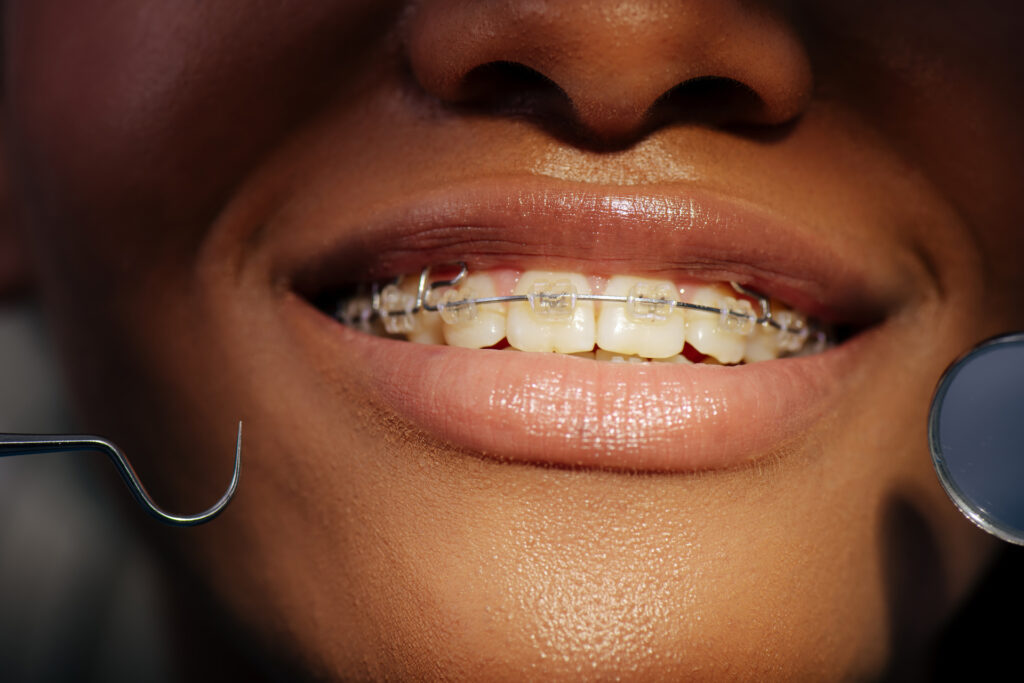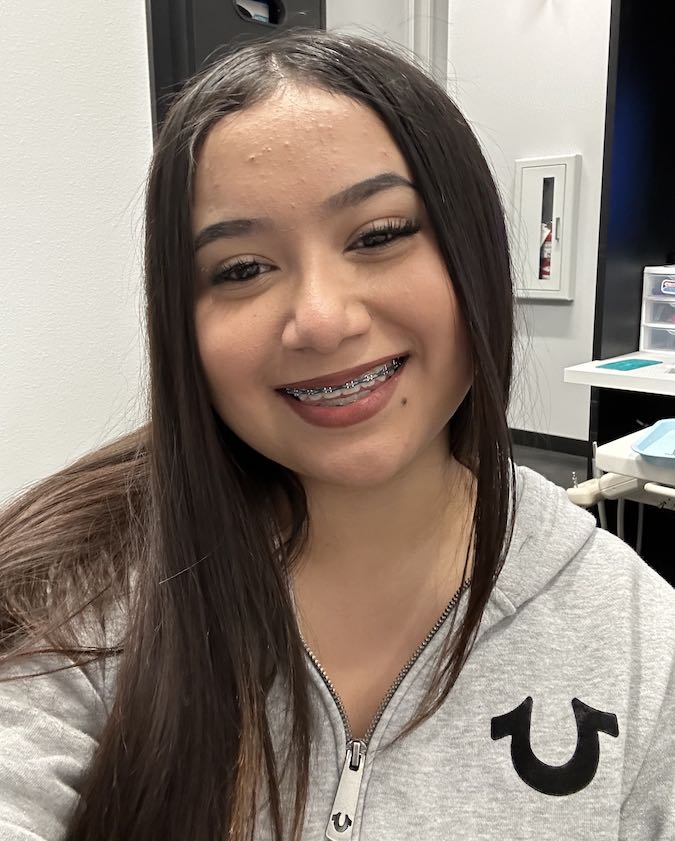These 9 Tips Can Help
Braces are designed to fix misalignments, correct overbites, and straighten teeth. When you first have braces fitted it can be painful because your body isn't used to the intrusion of metal in your mouth. Because the teeth need to be forced into position, there is a lot of pressure on the gums and jaw.
The pain from braces shouldn't last more than a few days. Luckily, there are many ways to alleviate the pain from braces, which include everything from ice packs and pain meds to peppermint tea and orthodontic wax.
Why Do Braces Hurt?
Braces use pressure to realign and shift your teeth into place. The metal brackets and wires in your mouth add bulk to your oral cavity, which can cause discomfort. The pain usually subsides when your body has adjusted to having a foreign object. When your braces are first fitted, you might experience painful gums and cuts on your cheeks from the metal brackets. Every few weeks when your braces are adjusted, you may feel that slight dull ache and pressure again.
Why Do Rubber Bands on Braces Hurt So Much?
Braces are fixed to your teeth with dental adhesive. An arch wire runs through the brackets on the teeth, putting pressure on them. When small elastic bands are fitted to the brackets, it increases the pressure, causing further discomfort. Elastics help to further align your teeth and fix your bite during the first stage of braces. The pain is usually short-lived, and not every brace-wearing person has to have elastics.
When Do Braces Stop Hurting?
When you first have braces fixed, your mouth needs time to adjust to them. The body isn't used to all the metal and wires, so you will probably feel mild pain for the first week. The pain will subside, but with each adjustment session at your orthodontist, the discomfort will return. Because your mouth is used to braces, the pain after an appointment typically lasts for up to 4 days.
How to Relieve Braces Pain at Home
There are many pain relief options to ease the ache that comes with each orthodontic adjustment. These 9 tips can help soothe your mouth.

Use an Ice Pack
A cold compress is good for localized pain. An ice pack will provide immediate relief to any swelling and numb the area. Cold items constrict blood vessels, slowing down the blood flow.
Cold Food and Drinks
Cold food and drinks will aid the healing process by providing temporary pain relief. Cold foods like yogurt and ice cream can really help with alleviating symptoms and reducing swelling. The constriction of blood flow from cold items can soothe your painful gums.
Swish With Salt Water
Add a teaspoon of salt to lukewarm water and gargle for a minimum of 30 seconds. The gentle abrasion from the salt in the water will lift any stuck food particles. Salt may also aid the healing process and acts as a natural disinfectant.
Oral Anesthetics
Speak to your orthodontist about an anesthetic gel that will numb the painful area. There are a variety of oral gels that can help to desensitize teeth and gums.
Over-the-Counter Pain Medicine
OTC pain medicines can help relieve discomfort. Your orthodontist can also prescribe a strong painkiller if necessary. Try not to take painkillers for more than a few days and let your orthodontist know if the pain is severe.
Heat Pads
Apply a heat pad or warm cloth to the painful areas in your mouth. Heat can be beneficial — especially if the ice packs aren't providing any relief or you're sensitive to the cold.
Eating Softer Foods
Don't put your jaw and mouth under any extra strain for the first few days after your braces have been adjusted. Try to avoid hard-to-chew food items and stick to eating softer foods.
Orthodontic Wax
Orthodontic wax relieves the chafing and poking from your metal brackets and wire. This tends to happen when your wires are changed and the settings are adjusted. The wax is for rubbing on the metal to prevent hurting the inside of your cheeks and lips.
Gum Massage
If your gums aren't too painful, give yourself a gum massage. Rub them gently or use something cold to massage them. The cold will add extra numbness to the area.
Hot Peppermint Tea Bags and Peppermint Oil
Peppermint has restorative properties, and the warm tea bags can have a soothing effect if used on the site of pain. Food-grade peppermint oil can also be applied to your gums, but it may be helpful to dilute it in a carrier oil such as coconut or olive oil to ensure it's not too strong.
If you are experiencing severe pain, our offices accept walk-in emergencies. Find a location near you.
Frequently Asked Questions
Do top or bottom braces hurt more?
It's common for the bottom row to hurt more. The tongue moves and pushes the bottom row of teeth while talking, adding more pressure.
Why do braces hurt the second day?
On the second day, your teeth start adjusting and moving. Day 2 is hard because your teeth have recovered from the initial shock of having something new fitted.
What stage of braces hurts the most?
The first 4 days after your wires have been adjusted will be the worst stage. The teeth have to get used to added pressure, and for some people, the pain can last a week. When you first get braces fitted, the pain may last longer as your mouth adjusts.
What type of braces hurt less?
Orthodontists say that clear aligner braces hurt the least because you remove them while eating. You also won't experience the chafing and sores from metal braces.
Does chewing more help with braces pain?
A few clinical trials have reported that chewing gum can help increase blood flow to the area surrounding the teeth, causing pain to subside.
Are braces worth the pain?
Even though braces can be uncomfortable at times, they're necessary to straighten teeth and correct misalignments and overbites.

